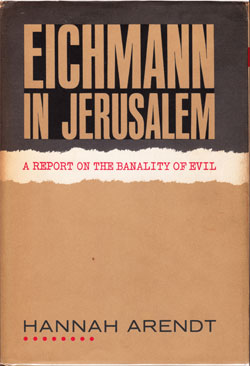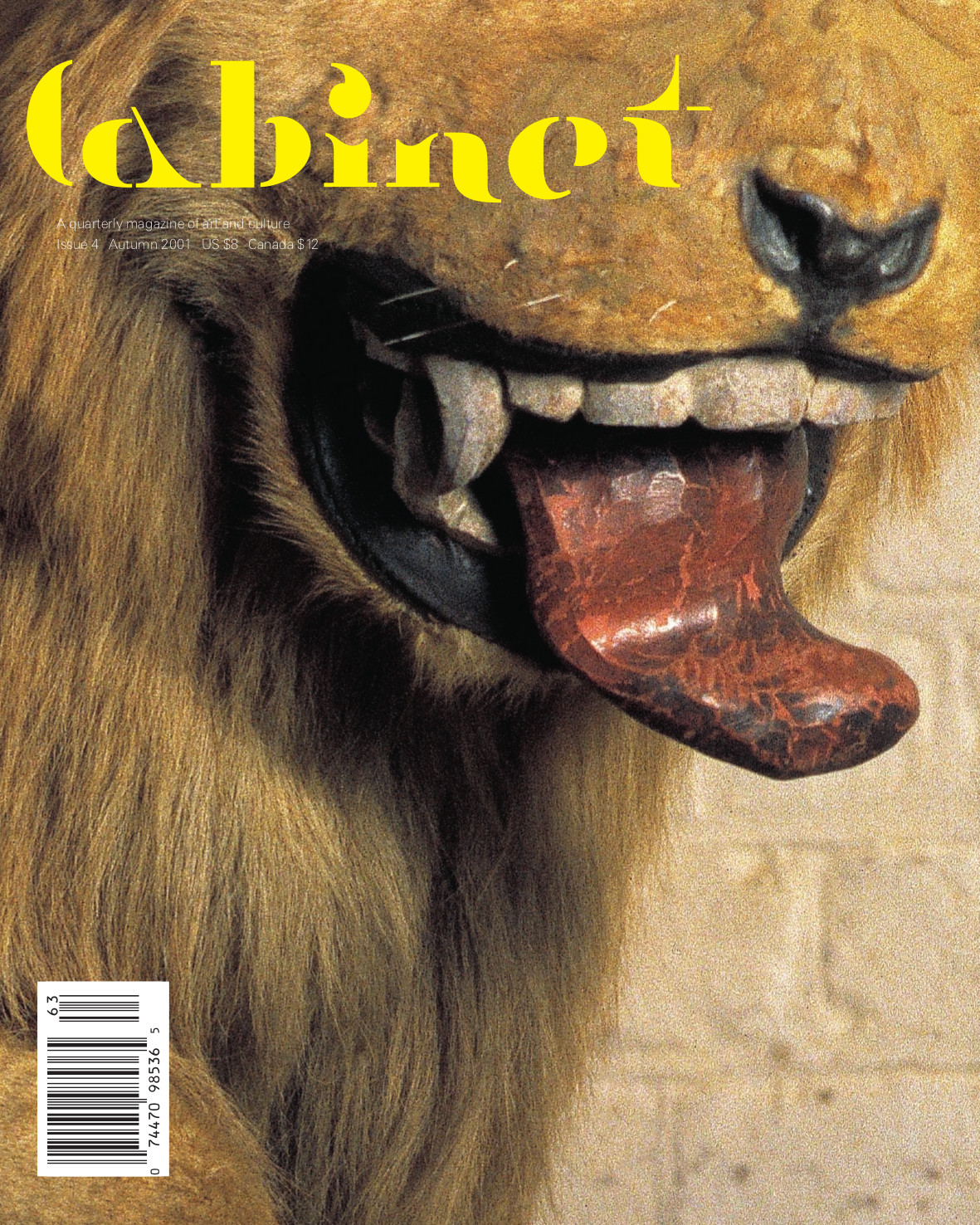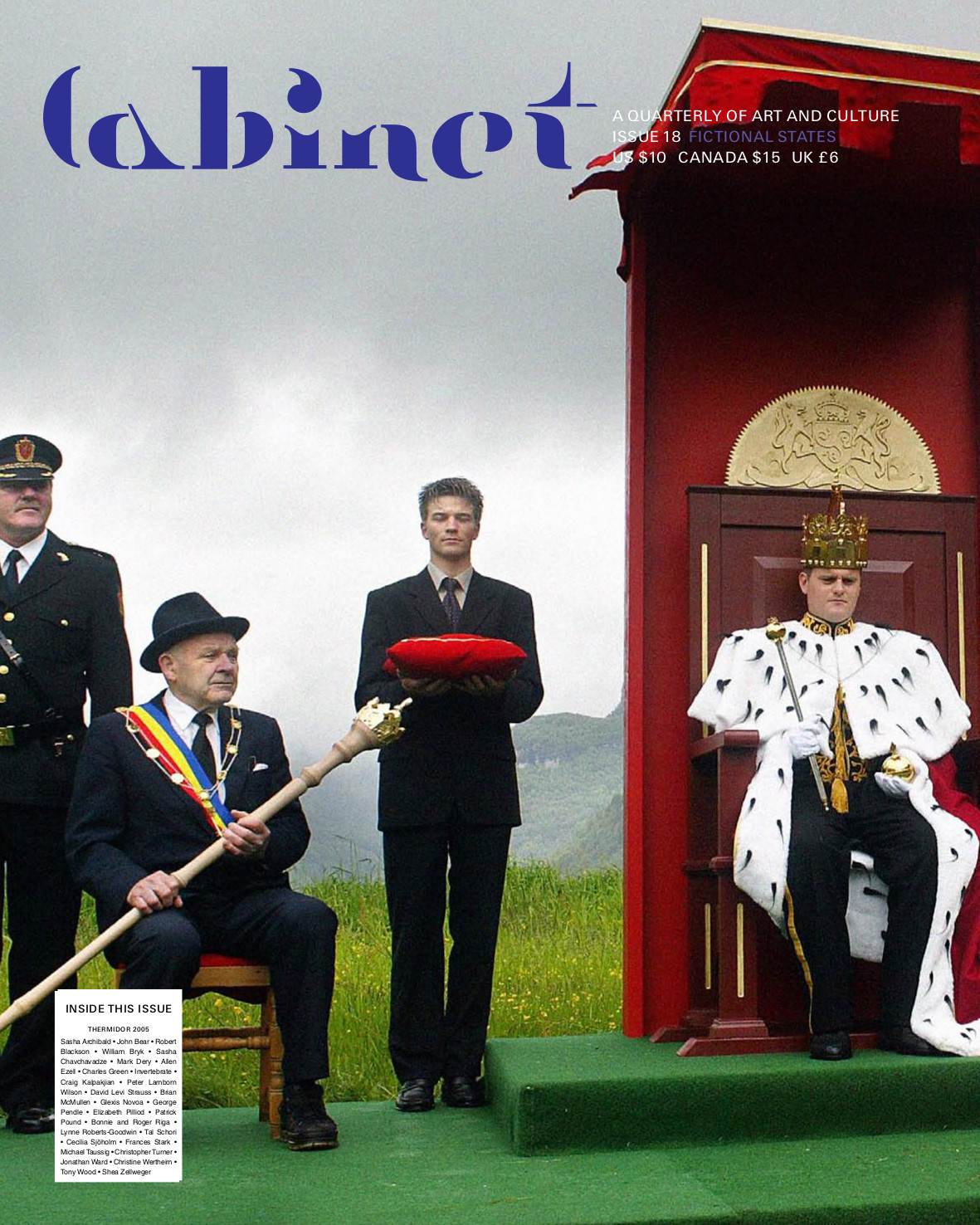Hannah Arendt: Eichmann in Jerusalem: A Report on the Banality of Evil (1963–) [EN, DE, IT, CZ, PL, ES, RU]
Filed under book | Tags: · evil, ideology, nazism, politics, totalitarianism

“Originally appearing as a series of articles in The New Yorker, Hannah Arendt’s authoritative and stunning report on the trial of Nazi leader Adolf Eichmann sparked a flurry of debate upon its publication. This revised edition includes material that came to light after the trial, as well as Arendt’s postscript directly addressing the controversy that arose over her account. A major journalistic triumph by an intellectual of singular influence, Eichmann in Jerusalem is as shocking as it is informative—an unflinching look at one of the most unsettling (and unsettled) issues of the twentieth century.”
Originally appeared as a series of articles in The New Yorker, 1963
Publisher Viking Press, 1963
Revised and Enlarged Edition, 1965
New edition with an Introduction by Amos Elon, Penguin Books, 2006
Eichmann in Jerusalem: A Report on the Banality of Evil (English, 1963/2007, updated on 2021-2-25)
Eichmann in Jerusalem: Ein Bericht von der Banalität des Bösen (German, trans. Brigitte Granzow, 1964/2007, updated on 2021-2-25)
La banalità del male: Eichmann e Gerusalemme (Italian, trans. Piero Bernardini, 1964)
Eichmann v Jeruzalémě: zpráva o banalitě zla (Czech, trans. Martin Palouš, 1995)
Eichman w Jerozolimie: rzecz o banalności zła (Polish, trans. Adam Szostkiewicz, 1998)
Eichmann en Jerusalén: Un estudio sobre la banalidad del mal (Spanish, trans. Carlos Ribalta, 1999/2003, EPUB, updated on 2021-2-25)
Banalnost zla. Eykhman v Ierusalime (Russian, trans. Sergei Kastalsky and Natalia Rudnitskaya, 2008, DJVU)
Cabinet (2000–)
Filed under magazine | Tags: · animal, art, chance, culture, design, dust, electricity, evil, friendship, history, language, literature, magic, mapping, nature, property, science, underground, weather


“Cabinet is a quarterly, Brooklyn, New York-based, non-profit art & culture periodical launched in 2000. Cabinet also operates an event and exhibition space in Brooklyn.
Cabinet is an award-winning quarterly magazine of art and culture that confounds expectations of what is typically meant by the words “art,” “culture,” and sometimes even “magazine.” Like the 17th-century cabinet of curiosities to which its name alludes, Cabinet is as interested in the margins of culture as its center. Presenting wide-ranging, multi-disciplinary content in each issue through the varied formats of regular columns, essays, interviews, and special artist projects, Cabinet‘s hybrid sensibility merges the popular appeal of an arts periodical, the visually engaging style of a design magazine, and the in-depth exploration of a scholarly journal. Playful and serious, exuberant and committed, Cabinet‘s omnivorous appetite for understanding the world makes each of its issues a valuable sourcebook of ideas for a wide range of readers, from artists and designers to scientists and historians. In an age of increasing specialization, Cabinet looks to previous models of the well-rounded thinker to forge a new type of magazine for the intellectually curious reader of the future.”
Cabinet is a non-profit organization. Consider supporting it by subscribing to the magazine, buying a limited edition artwork, or making a tax-deductible donation.
HTML (sold-out issues as HTML articles; click on the covers; updated on 2013-10-10; the download links were removed)
Comments (6)
